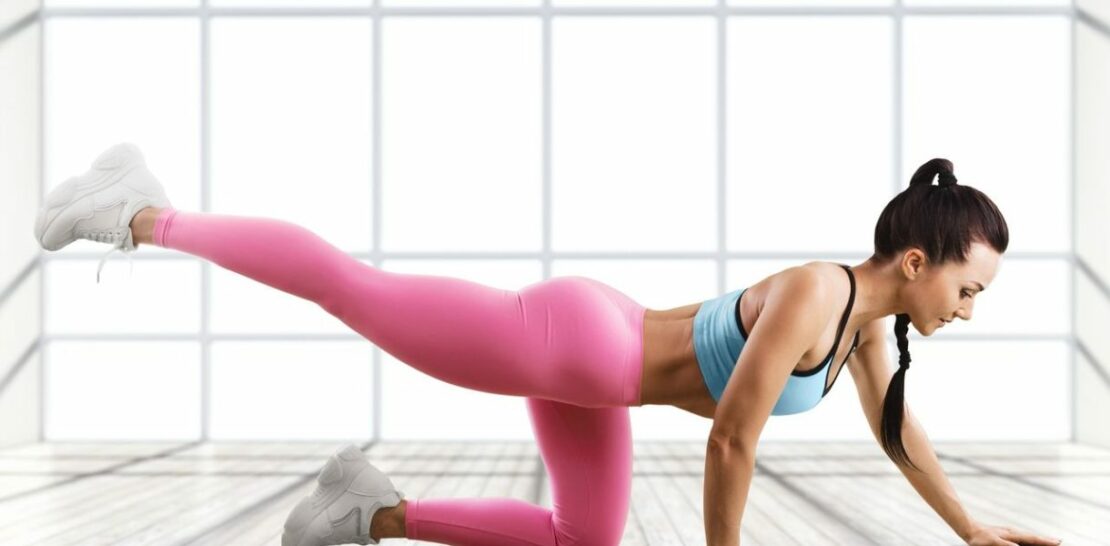A toned and shapely posterior not only boosts confidence but also contributes to improved performance and stability in various physical activities.
This comprehensive article delves into the anatomy of the buttocks, the importance of having strong glutes, and the top 5 exercises that will help you achieve that perfectly sculpted derriere.
So, whether you are an aspiring athlete, a fitness enthusiast, or someone who simply wants to enhance their physique, get ready to elevate your glute game and embark on this transformative journey.
The Anatomy of the Buttocks: Understanding Your Glutes
Before diving into the exercises, it is crucial to understand the muscles that constitute the buttocks and how they function.
The gluteal region comprises three primary muscles: the gluteus maximus, gluteus medius, and gluteus minimus. These muscles are responsible for various actions, including hip extension, abduction, and external rotation.
- Gluteus Maximus: The largest and most superficial of the three, the gluteus maximus primarily contributes to hip extension and upper leg rotation. It is the most visible of the three muscles and plays a significant role in generating power during movements like running, jumping, and climbing.
- Gluteus Medius: Situated beneath the maximus, the gluteus medius functions primarily in hip abduction (moving the leg away from the body’s midline) and stabilization. This muscle also prevents the hip from dropping during single-leg activities, such as walking and running.
- Gluteus Minimus: The smallest and deepest of the three muscles, the gluteus minimus assists in hip abduction and internal rotation. It also helps maintain pelvic stability during walking and other dynamic movements.
The Importance of Strong Glutes for Overall Health and Performance
Beyond aesthetics, strong glutes are essential for optimal body function and injury prevention.
- Postural Support: Sitting for extended periods can cause tightness in the hip flexors and weakness in the gluteal muscles, leading to postural imbalances. Strengthening the glutes helps maintain proper posture and alleviate lower back pain.
- Improved Athletic Performance: The glutes play a crucial role in generating power and stability during various athletic movements. Strong glutes allow for better force production, resulting in increased speed, agility, and jumping ability.
- Injury Prevention: Weak glutes can contribute to a plethora of injuries, including knee and ankle issues, hamstring strains, and lower back pain. By strengthening the gluteal muscles, one can prevent these injuries and promote overall musculoskeletal health.
Top 5 Exercises for Shapely and Strong Buttocks
Now that you have a better understanding of the anatomy and importance of strong glutes, it’s time to explore the top 5 exercises to help sculpt and strengthen your buttocks.
1. Squats
Squats are a classic compound movement that targets the gluteus maximus, quads, and hamstrings. To perform a squat, follow these steps:
- Stand with your feet shoulder-width apart and toes pointed slightly outward.
- Engage your core and keep your chest upright.
- Slowly lower your body by bending your knees and pushing your hips back as if sitting in a chair.
- Go as low as comfortable while keeping your knees aligned with your toes.
- Push through your heels to return to the starting position.
2. Lunges
Lunges target not only the glutes but also the quads, hamstrings, and calf muscles. This exercise can be performed with bodyweight or added resistance, such as dumbbells or a barbell.
- Stand with your feet shoulder-width apart and hands on your hips (or holding weights).
- Step forward with one foot and lower your body until both knees form 90-degree angles.
- Push through your front heel to return to the starting position.
- Repeat on the opposite leg.
3. Hip Thrusts
Hip thrusts directly target the gluteus maximus, making them an excellent isolation exercise for glute development.
- Begin seated on the ground with your back against a bench or step, knees bent, and feet planted on the floor.
- Position a weight (barbell, dumbbell, or resistance band) across your hips.
- Drive through your heels and extend your hips upward, lifting the weight until your body forms a straight line from your shoulders to your knees.
- Lower your hips back to the ground and repeat.
4. Glute Bridge
The glute bridge is a versatile exercise that primarily targets the gluteus maximus and hamstrings. This movement can be performed with bodyweight or added resistance.
- Lie on your back with your knees bent and feet flat on the ground, hip-width apart.
- Engage your core and squeeze your glutes as you lift your hips toward the ceiling.
- Hold the top position for a moment before slowly lowering your hips back to the ground.
5. Clamshells
Clamshells are an excellent exercise for targeting the gluteus medius and minimus, which contribute to both hip stability and glute aesthetics.
- Lie on your side with your hips and knees bent at 90-degree angles and your feet together.
- Keeping your feet touching, lift your top knee as high as possible without shifting your hips.
- Lower your knee back to the starting position and repeat.
- Perform the exercise on both sides.
For optimal results, incorporate these exercises into your regular workout routine, aiming for 3-4 sets of 10-15 repetitions per exercise. As you progress, consider adding resistance or modifying the exercises to maintain a challenging intensity level.
Tips for Maximizing Glute Activation and Development
To ensure that you are effectively targeting the gluteal muscles and promoting growth, consider the following tips:
Mind-Muscle Connection: Actively focus on engaging the glute muscles throughout each exercise. The mind-muscle connection can help improve muscle activation and yield better results.
Proper Form: Prioritize technique over heavy loads to avoid injury and ensure that the glute muscles are being targeted effectively. Consult with a fitness professional if you are unsure about your form.
Variety: Incorporate a mix of compound and isolation exercises to target all three gluteal muscles and promote balanced development.
Progressive Overload: Gradually increase the intensity of your workouts, either by adding weight, increasing repetitions, or decreasing rest periods. This will challenge your muscles and promote growth.
In conclusion, achieving shapely and strong buttocks requires a combination of targeted exercises, proper technique, and progressive overload. By understanding the anatomy and importance of the gluteal muscles, incorporating the top 5 exercises, and following the tips provided, you can sculpt the glutes of your dreams and reap the numerous health and performance benefits associated with strong glutes. So why wait? Get started on your journey to a stronger, shapelier posterior today.




